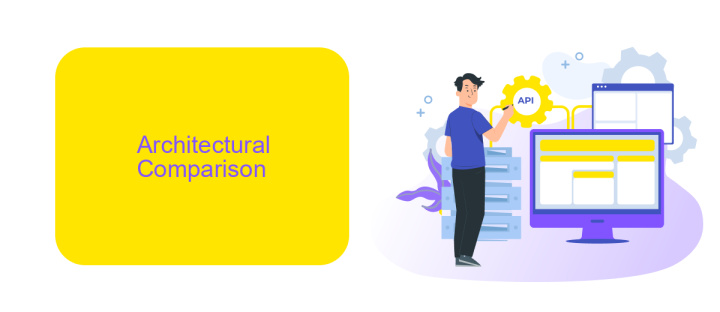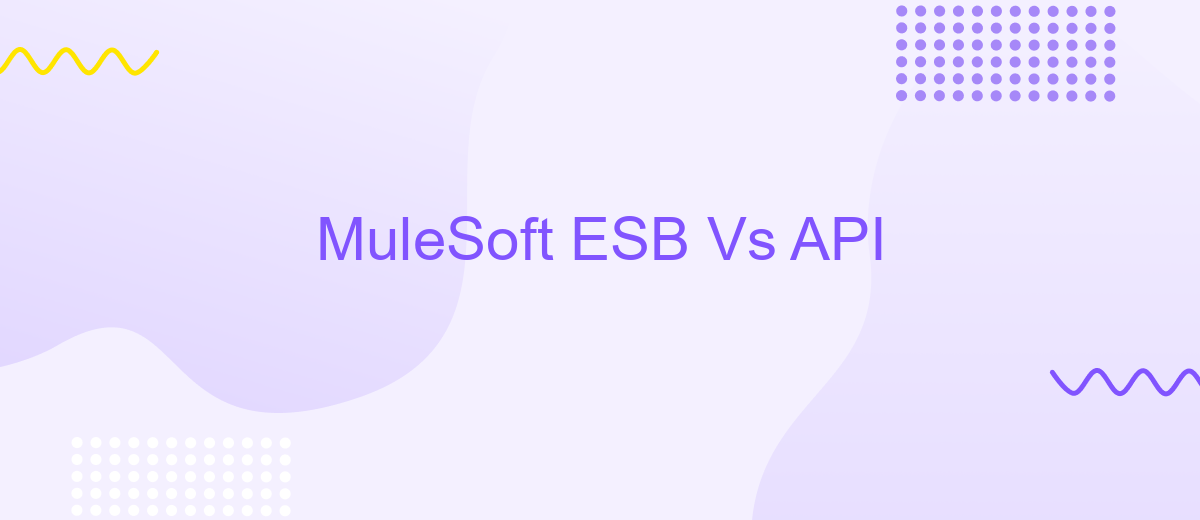MuleSoft ESB Vs API
In today's rapidly evolving digital landscape, businesses are increasingly seeking efficient integration solutions to streamline operations and enhance connectivity. MuleSoft, a leading integration platform, offers two powerful approaches: Enterprise Service Bus (ESB) and Application Programming Interfaces (APIs). This article explores the key differences, benefits, and use cases of MuleSoft ESB versus APIs, helping organizations determine the best fit for their integration needs.
Overview
MuleSoft ESB (Enterprise Service Bus) and APIs (Application Programming Interfaces) are two powerful tools for integrating systems and applications. MuleSoft ESB is a middleware solution that facilitates communication between different applications by routing and transforming data. APIs, on the other hand, allow applications to interact with each other using defined protocols and data formats.
- MuleSoft ESB focuses on complex integration scenarios, providing robust capabilities for data transformation and routing.
- APIs offer a more lightweight approach, enabling direct communication between applications through standardized interfaces.
- Both solutions aim to streamline processes and enhance connectivity across systems.
While MuleSoft ESB is ideal for large-scale, enterprise-level integrations, APIs are more suited for straightforward, point-to-point connections. For businesses seeking an easy-to-use integration platform, ApiX-Drive offers a user-friendly solution to automate workflows and connect various applications without extensive coding. This makes it an excellent choice for those who need a quick and efficient way to manage integrations.
Architectural Comparison

When comparing MuleSoft ESB and API, it is essential to consider their architectural frameworks. MuleSoft ESB (Enterprise Service Bus) provides a robust, centralized platform for integrating various applications and services. It operates as a middleware layer, enabling seamless communication between disparate systems through message routing, transformation, and orchestration. This architecture is particularly advantageous for complex enterprise environments where multiple systems need to interact in a coordinated manner.
On the other hand, API-based architecture emphasizes decentralized, modular components that communicate via standardized interfaces. This approach offers greater flexibility and scalability, allowing organizations to develop and deploy services independently. Tools like ApiX-Drive facilitate this process by offering no-code integration solutions that connect various APIs effortlessly. By leveraging such services, businesses can streamline their integration efforts, reduce development time, and enhance overall system agility. Therefore, while MuleSoft ESB is ideal for comprehensive, centralized integration, API-based architecture supported by tools like ApiX-Drive provides a more agile and scalable alternative.
Technical Features

MuleSoft ESB and APIs offer distinct technical features that cater to different integration needs. MuleSoft ESB is a robust platform designed to handle complex integrations with ease, providing a unified solution for connecting disparate systems. It offers features such as data transformation, routing, and orchestration, allowing businesses to streamline their processes efficiently. APIs, on the other hand, offer a more lightweight and flexible approach, enabling seamless communication between applications and services.
1. MuleSoft ESB provides comprehensive data transformation capabilities, allowing seamless data exchange between different formats and protocols.
2. It supports advanced routing and orchestration, enabling complex workflows and business processes.
3. APIs offer a more modular and scalable solution, allowing developers to build and deploy integrations quickly and efficiently.
4. Tools like ApiX-Drive enhance API integrations by offering automated workflows and easy-to-use interfaces, simplifying the process of connecting various applications.
Both MuleSoft ESB and APIs have their unique strengths, making them suitable for different scenarios. MuleSoft ESB is ideal for enterprises needing a robust, all-in-one integration solution, while APIs provide a more agile and scalable approach. Combining these tools with services like ApiX-Drive can further streamline integration processes, offering a powerful and efficient solution for modern businesses.
Advantages and Disadvantages

MuleSoft ESB and APIs both offer unique advantages and disadvantages for enterprise integration. MuleSoft ESB provides a robust and scalable platform for integrating various applications and services within an organization, making it ideal for complex, on-premise systems. On the other hand, APIs offer a more lightweight and flexible approach, enabling faster integration with cloud-based services and third-party applications.
When considering these technologies, it's essential to weigh the pros and cons to determine the best fit for your specific needs.
- MuleSoft ESB Advantages: High scalability, comprehensive integration capabilities, strong support for on-premise systems.
- MuleSoft ESB Disadvantages: Higher complexity, longer implementation time, potential for higher costs.
- API Advantages: Flexibility, speed of integration, ease of use with cloud services like ApiX-Drive.
- API Disadvantages: May not be as robust for complex on-premise systems, potential security concerns with third-party integrations.
Ultimately, the choice between MuleSoft ESB and APIs depends on your organization's specific requirements and existing infrastructure. For businesses looking to leverage cloud services and achieve rapid integration, APIs, particularly when used with tools like ApiX-Drive, may offer a more efficient solution. Conversely, for more extensive, on-premise systems, MuleSoft ESB might be the better option.
Use Cases
MuleSoft ESB is particularly effective in scenarios where complex integrations between various enterprise systems are required. It excels in environments needing robust data transformation, orchestration, and routing capabilities. For example, it is ideal for integrating legacy systems with modern applications, enabling seamless data flow across different platforms. MuleSoft ESB is also suitable for large-scale enterprises that require high reliability and performance in their integration processes.
On the other hand, APIs are best suited for scenarios that demand real-time data access and interaction between applications. They are perfect for enabling mobile apps, web services, and third-party integrations. For instance, services like ApiX-Drive can simplify the process of connecting various APIs without extensive coding, making it easier for businesses to automate workflows and enhance productivity. APIs are particularly useful for startups and small to medium-sized businesses looking to quickly adapt to changing market needs and scale their operations efficiently.
FAQ
What is the primary difference between MuleSoft ESB and APIs?
When should I use MuleSoft ESB instead of just APIs?
Can MuleSoft ESB and APIs be used together?
What are the advantages of using APIs over MuleSoft ESB?
How can I simplify the integration process if I'm not using MuleSoft ESB?
Do you want to achieve your goals in business, career and life faster and better? Do it with ApiX-Drive – a tool that will remove a significant part of the routine from workflows and free up additional time to achieve your goals. Test the capabilities of Apix-Drive for free – see for yourself the effectiveness of the tool.

